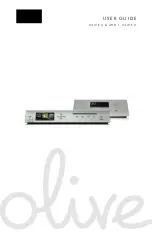
Chapter 2. Installing optional devices
This section provides detailed instructions for installing optional hardware devices in the server.
In addition to the instructions in this chapter for installing optional hardware devices, updating the firmware
and device drivers, and completing the installation, Business Partners must also complete the steps in
“Instructions for Business Partners” on page 25.
Important:
To help ensure that the devices that you install work correctly and do not introduce problems,
observe the following precautions:
1. Make sure that the server and the installed firmware levels support the devices that you are installing.
If necessary, update the UEFI and IMM firmware and any other firmware that is stored on the system
board. For information about where firmware is stored in the server, see “Updating the firmware” on page
141. For a list of supported optional devices for the server, see http://www.lenovo.com/ serverproven/.
2. Use the best practices to apply current firmware and device-driver updates for the server and
optional devices. To download the “System x Firmware Update Best Practices” document, go
to www.ibm.com/support/entry/portal/docdisplay?lndocid=MIGR-5082923&brandind=5000008.
Additional hints and tips are available from the following sites:
• Support website: http://www.lenovo.com/support
• System x configuration tools: http://shop.lenovo.com/us/ en/systems/server-library/
#comboFilters[category]=.Tools
3. Before you install optional hardware devices, make sure that the server is working correctly. Start the
server and make sure that the operating system starts, if an operating system is installed, or that a
19990305 error code is displayed, indicating that an operating system was not found but the server
is otherwise working correctly. If the server is not working correctly, see “Running the DSA Preboot
diagnostic programs” on page 187 for information about how to run diagnostics.
4. Follow the installation procedures in this chapter and use the correct tools. Incorrectly installed devices
can cause system failure because of damaged pins in sockets or connectors, loose cabling, or loose
components.
Instructions for Business Partners
Instructions for Business Partners on verifying the newly installed devices by running the Dynamic System
Analysis (DSA) stress test.
In addition to the instructions in this chapter for installing optional hardware devices, updating firmware and
device drivers, and completing the installation, Business Partners must also complete the following steps:
1. After you have confirmed that the server starts correctly and recognizes the newly installed devices and
that no error LEDs are lit, run the Dynamic System Analysis (DSA) stress test. For information about
using DSA, see “Dynamic System Analysis” on page 185.
2. Shut down and restart the server multiple times to ensure that the server is correctly configured and
functions correctly with the newly installed devices.
3. Save the DSA log as a file and send it to Lenovo. For information about transferring data and logs, see
“How to send DSA data” on page 26.
4. To ship the server, repackage it in the original undamaged packing material and observe procedures
for shipping.
Support information for Business Partners is available at http://www.ibm.com/partnerworld.
© Copyright Lenovo 2014, 2016
25
Summary of Contents for x3650 M4 BD 5466
Page 1: ...Lenovo System x3650 M4 Installation and Service Guide Machine Type 7915 ...
Page 6: ...iv Lenovo System x3650 M4 Installation and Service Guide ...
Page 176: ...164 Lenovo System x3650 M4 Installation and Service Guide ...
Page 226: ...214 Lenovo System x3650 M4 Installation and Service Guide ...
Page 1042: ...1030 Lenovo System x3650 M4 Installation and Service Guide ...
Page 1200: ...1188 Lenovo System x3650 M4 Installation and Service Guide ...
Page 1204: ...1192 Lenovo System x3650 M4 Installation and Service Guide ...
Page 1212: ...Taiwan BSMI RoHS declaration 1200 Lenovo System x3650 M4 Installation and Service Guide ...
Page 1221: ......
Page 1222: ......
















































